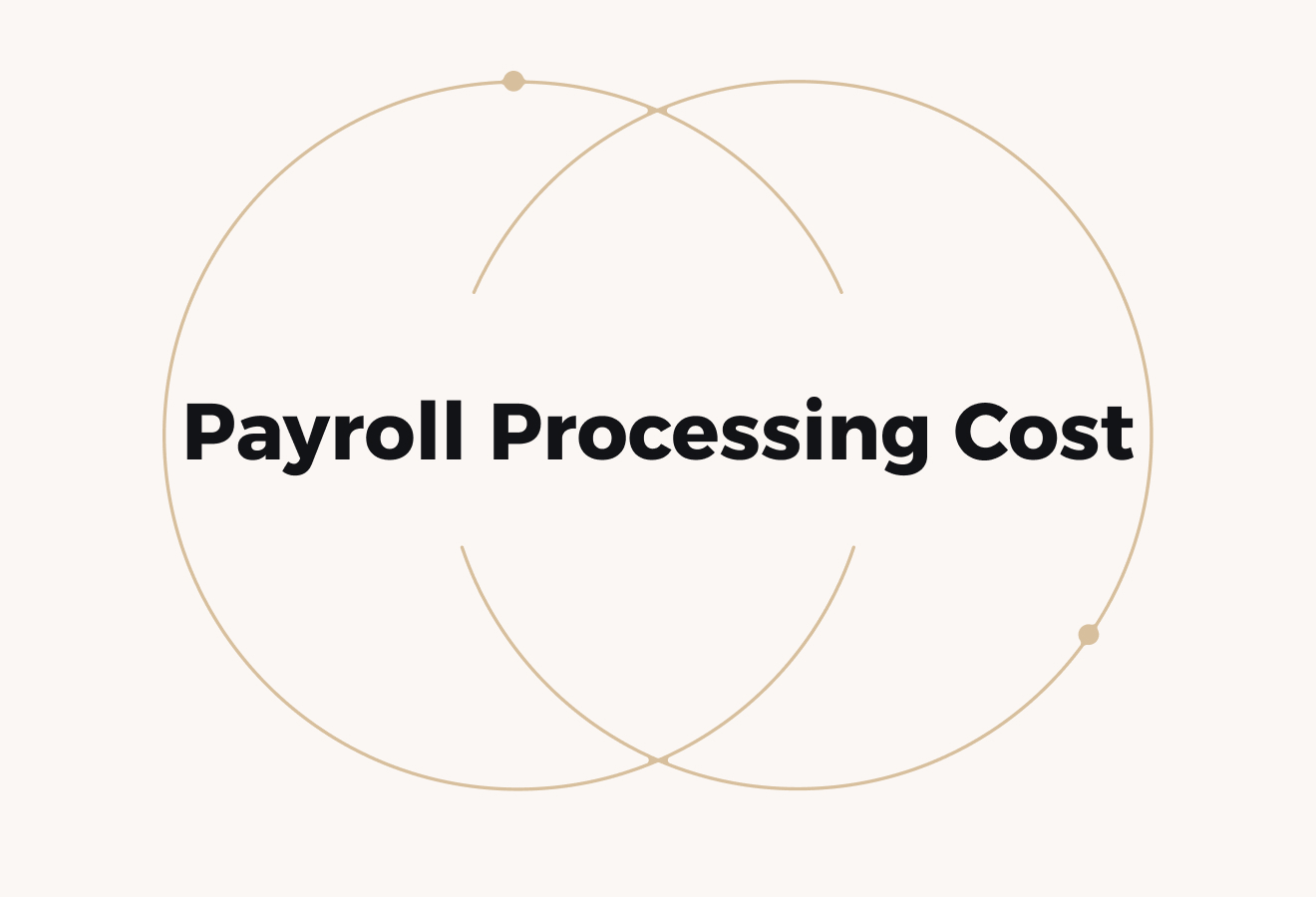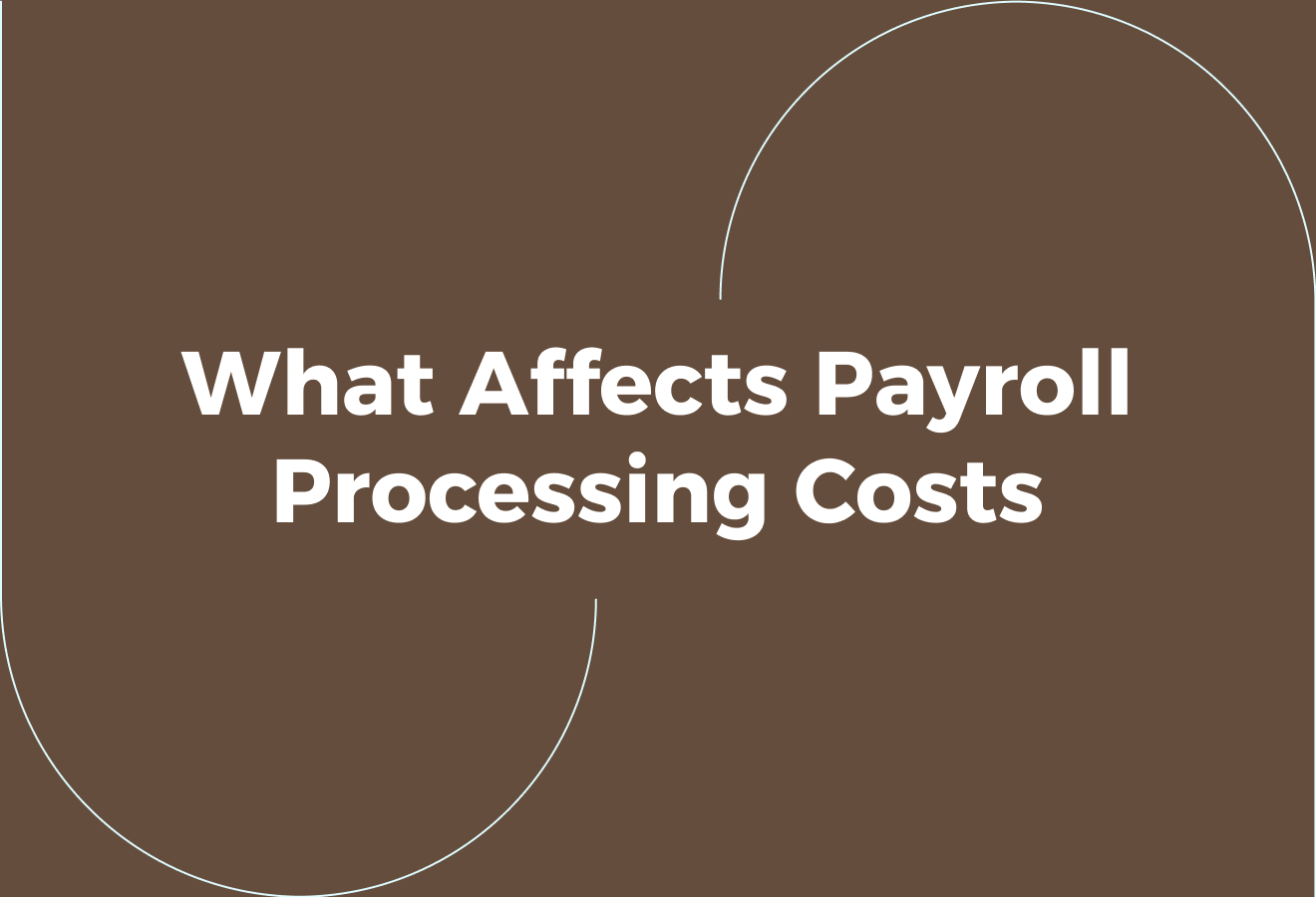How Much Does Payroll Processing Cost? Typical Pricing Models & Costs

How Much Does Payroll Processing Cost? Typical Pricing Models & Costs
Running payroll can often feel like managing a second job, as it involves tracking hours, calculating taxes, filing forms, and avoiding mistakes. Payroll automation helps by syncing time entries, calculating taxes, and flagging errors, reducing manual work and the risk of penalties. For many businesses, the automation of payroll is no longer a luxury but a necessity to streamline operations and ensure compliance. This article explains the costs of payroll processing, typical pricing models, common fees, and potential hidden charges so that you can compare per-employee costs, monthly subscriptions, and outsourcing options with confidence.
Suppose you want a straightforward way to run the numbers. In that case, Cercli’s global HR system centralises payroll, compliance, and benefits tools, allowing you to estimate software subscription fees, per-pay-period charges, setup fees, and tax filing support without managing multiple spreadsheets.
How Much Does Payroll Processing Cost? Typical Models & Costs

Most providers use a subscription model, along with a per-employee charge.
For comprehensive payroll services, other models include:
- Flat monthly fees
- Per pay run charges
- A percentage of payroll
Many vendors offer tiers that bundle features and reduce the per-employee rate as headcount grows. You can sometimes negotiate discounts for annual contracts or when switching from another provider. Which structure matches your cash flow and administrative capacity?
Base Costs You Can Expect in the UAE and Similar Markets
Monthly subscription fees typically range from AED 90 to AED 735.
This covers standard payroll runs on your:
- Schedule
- Direct deposit
- Basic tax
- Compliance calculations
- Essential payroll reports
Add the per-employee charge, typically ranging from AED 22 to AED 55 per employee per month. Larger employers usually experience lower per-employee rates as their headcount increases.
Set Up Fees and What They Cover
Setup fees usually are one-off and range from AED 365 to AED 1,835.
- Employee data upload
- Compliance checks
- Alignment with local requirements
Providers often waive setup fees when you sign an annual contract, switch from another supplier, or join during a promotion.
A guided onboarding that includes a review of payroll settings before the first pay run reduces the risk of classification errors.
Common Add-On Features and Typical Price Ranges
- Tax filing services: AED 90 to AED 185 per month
- HR tools: AED 37 to AED 55 per employee per month
- Time tracking integration: AED 18 to AED 30 per employee per month
- Benefits administration: AED 18 to AED 37 per employee per month
Use add-ons selectively. Tax filing usually reduces compliance risk, while time tracking helps manage hourly staff and overtime.
Hidden and Additional Costs to Budget For
Expect extra charges for year-end filings and compliance reports in many cases. Migration or data import fees may be incurred when you switch providers. Penalties for late submissions or incorrect filings can be significant if payroll is mishandled.
Keep a buffer for these items when forecasting payroll service costs.
How Per-Employee Scaling and Discounts Affect Overall Spend
Per-employee fees often decline as you add staff. For small teams, the per-employee charge is a larger share of total monthly cost. For mid-sized and larger employers, the base subscription becomes a smaller percentage of total payroll vendor spend.
Negotiation levers include:
- Contract length
- Volume pricing
- Consolidating services with one provider
Example Cost Scenarios Using the Ranges Above
- Small business example: base subscription AED 90 plus AED 22 per employee for five staff equals AED 200 each month
- Mid-sized firm example: mid-tier subscription AED 300 plus AED 37 per employee for 50 staff equals AED 2,150 each month
- Larger employer example: higher-tier AED 735 plus AED 22 per employee for 250 staff equals AED 5,235 each month
Add-ons such as tax filing or HR tools will increase these totals according to the per-employee or flat monthly ranges already listed.
Questions to Ask When Comparing Payroll Pricing and Providers
- What does the base subscription include, and what counts as an add-on?
- How are per-employee fees calculated for part-time or variable staff?
- Are setup and migration fees negotiable or waivable?
- Do you get support during onboarding and the first pay run?
- How are penalties or corrections handled and charged?
Ways To Keep Payroll Processing Costs Predictable
Limit add-ons to features you will use regularly. Negotiate a sliding per-employee rate for growing headcount. Consider annual billing to secure a lower monthly price. Audit your payroll settings periodically to avoid costly errors and late filings.
Related Reading
- Why Outsource Payroll Processing Services
- Employee Payroll Management
- What Is Payroll Management in HR
- What Is the Payroll Tax Rate
What Affects Payroll Processing Costs?

Employee total compensation is the single most significant driver of payroll costs. Base salary and hourly rates set the gross pay that payroll systems must calculate.
Add:
- Bonuses
- Overtime
- Commissions
- Allowances
- Benefits
- Payroll tax base rises
Higher compensation also increases employer liabilities, such as National Insurance-style contributions, pension contributions, and other statutory payments, which compound with each pay period. How much do these extras change your per-employee cost each month?
Software and Automation Costs That Change the Bill
Payroll software costs vary by model.
You may pay:
- A monthly subscription
- A setup fee
- A licence per user
- Charges per payroll run
Implementation and integration costs with HR, time tracking, or accounting systems add to the upfront costs.
When estimating the total cost of ownership, factor in hidden fees such as:
- Data migration
- Custom configuration
- Ongoing updates
Will the system reduce manual hours enough to offset these charges?
How Payroll Frequency Alters Your Spend
Payroll frequency affects processing time and transaction fees. Weekly payrolls increase the number of payroll runs and banking transactions compared to monthly payrolls, which in turn raises banking and administrative costs.
Some providers charge per payroll run while others offer unlimited runs for a flat fee, so choose the model that aligns with your pay schedule and headcount growth. What payroll rhythm balances cash flow needs and processing costs for your business?
Features and Service Levels That Drive Price Up or Down
Basic payroll tasks, such as wage calculation and payslip issuance, are more cost-effective.
Add-ons such as:
- Tax filing
- Benefits administration
- Time tracking
- Onboarding
- Absence management increases the price
Full-service payroll providers assume a greater share of the administrative burden and typically charge a higher monthly fee per employee. Determine which services you need to keep in-house and which you want to outsource to manage your monthly payroll processing fees effectively.
Tax Filing and Compliance Fees That Add to Cost
Tax filing, statutory reports, and compliance work require extra effort and raise costs. Multi-state or international payroll increases complexity and often requires specialist compliance support or local filings.
Non-compliance risks lead to fines that can outweigh any software savings, so include compliance costs in your total payroll budget. How much will multi-jurisdiction tax obligations push up your per-employee cost?
Support Options and Their Price Tags
Support level affects price and risk. Self-serve platforms with online help are more cost-effective. Services that offer live support, dedicated account managers, or 24-hour assistance come with a premium.
Consider the potential costs of downtime or processing errors to your business and whether paying more for guaranteed support would reduce overall risk and time spent. Do you prefer lower recurring fees or faster, hands-on help when problems occur?
Employee Classification: Employees Versus Contractors and Costs
Different classifications require different processes and forms. Managing contractors often requires separate contractor payments and local withholding rules, as well as compliant contractor agreements, which add to administrative steps.
Misclassification can trigger back taxes and penalties, so account for audit and legal support costs when estimating the total costs of payroll outsourcing. How many contractor payments will you make each month versus payroll wages?
Where Your People Work Matters: Geography and Cost
Geography drives:
- Local compliance
- Payroll taxes
- Banking rules
- Reporting requirements
Hiring remote staff or personnel across multiple countries adds payroll complexity and local legal requirements, increasing both base and per-employee costs. Multi-currency payroll and international payment rails add transfer fees and FX margins.
Are you set up to manage local registrations, statutory filings, and cross-border payments efficiently?
Using a PEO or EOR and What You Pay for Legal Cover
A PEO or EOR model transfers employment and legal obligations to a provider, thereby reducing your compliance exposure.
You will generally pay a higher per-employee price because the provider:
- Assumes payroll taxes
- Statutory liabilities
- Employment contracts
This option can be cost-effective for short-term growth or when entering a new country without a local entity; however, expect the per-employee cost to reflect the legal coverage and risk transfer. Would the cost of an EOR be lower than the risk and time required to establish local entities?
Customised Reporting and Analytics That Cost More
Custom reporting, audit trails, and analytics dashboards require additional setup and may be available only with premium plans. If you require tailored reports for finance, HR, or auditors, please note that additional consultancy or configuration fees may be applicable. Standard reports lower costs but may not meet every stakeholder's need, which could shift work back to internal teams.
How valuable are custom reports for your payroll control and planning?
Payroll Tax, Banking Fees, and Hidden Charges to Watch For
Payroll taxes, bank transaction fees, penalties for late filings, and currency conversion fees are common add-ons.
Some vendors advertise low subscription fees but charge for:
- Bank transfers
- Year-end reporting
- Extra pay runs
Ask about setup fees, support fees, and charges for runs outside of regular payroll cycles to ensure fair cost comparisons. What hidden costs could erode the savings from a cheaper platform?
Managing Payroll and Compliance Across the Middle East and Beyond
Cercli is designed for companies in the Middle East who need a flexible, compliant, and reliable way to manage their workforce, whether teams are local, remote, or spread across multiple countries.
Use Cercli as a single global HR system to manage WPS registrations in the UAE, process GOSI in Saudi Arabia, handle DEWS contributions, run multi-currency payroll in over 150 countries, and access EOR services and compliant international contracts.
In-House vs. Outsourced Payroll Costs

In-House Payroll: What You Pay and Why
Managing payroll internally keeps control over employee data and processes. Major cost lines include payroll software subscription fees, payroll staff salaries, training, ongoing time investment for data entry and reconciliation, and the cost of staying up-to-date with tax rules and compliance reporting.
Human error matters. A 2022 Ernst & Young survey found that 1 in 5 payroll cycles contains errors, and each error costs an average of $291. How will your team absorb that risk when payroll cycles are frequent or complex?
Outsourced Payroll: Predictable Fees and What They Usually Cover
Outsourced payroll shifts much of the operational burden to a provider and turns many variable costs into a predictable charge. Typical fees for small businesses range from AED 735 to AED 1,835 per month, equivalent to approximately USD 200 to USD 500.
This often covers:
- Core payroll processing
- Tax calculations
- Compliance reporting
Some providers also offer optional services, including HR support, benefits administration, and compliance updates. Do you need a fixed monthly cost or granular per-employee billing?
Hidden Costs and the True Cost of Payroll Errors
Payroll processing costs exceed subscription fees and vendor charges.
Hidden costs include:
- Penalties for incorrect tax settings
- The staff time required to fix errors
- Delayed payments lower morale
- The administrative drag of manual adjustments
Using the EY figures, a company running bi-weekly payroll faces at least $1,500 per year in avoidable penalties from error rates alone. That headline number illustrates why error costs should be factored into any cost comparison.
Cost Examples and Simple Maths You Can Use Now
Work with clear unit measures. For outsourced payroll, divide the monthly fee by headcount to get the cost per employee per month. For example, AED 1,100 per month for 20 employees equals AED 55 per employee per month and AED 13,200 per year.
For in-house payroll, total the software subscription, plus estimated payroll staff time and error costs, and then divide by the number of employees to find your in-house cost per employee. Which offers a lower cost per employee after you add compliance risk and time costs?
How to Compare Pricing Lines and Avoid Surprises
Ask providers about:
- Setup fees
- Per-employee or per-payslip charges
- Payroll service charges for off-cycle runs
- Fees for statutory reporting
For in-house solutions, list:
- Software charges
- Licence increases
- Upgrades
- The time cost of manual reconciliations
Also, check the service level for support and the speed of fixes when errors occur. Which of these fees will change as your headcount grows?
Questions to Help You Decide the Right Model
- How many employees do you have, and how often do you run payroll?
- Is your payroll simple, or does it include allowances, overtime, commissions, or cross-jurisdiction tax?
- Are you willing to hire specialised payroll staff, or do you prefer predictable monthly fees?
- Do you need full control of payroll data, or is delegated control acceptable?
- Which option provides the best balance of lower total cost of ownership and reduced compliance risk?
Related Reading
- How Does Payroll Processing Work
- AI in Payroll Processing
- Benefits of Payroll Outsourcing
- Payroll Automation Benefits
- Payroll Tax vs Income Tax
How to Save Money on International Payroll Processing

Automate routine tasks and you reduce the time your payroll clerk spends on each run. Payroll costs include the salary of the person who processes payroll, so less human intervention lowers payroll administration costs. Utilise payroll software integrations to connect HR records, time and attendance, and bank feeds, allowing data to flow automatically between systems.
This reduces:
- Manual data entry
- Lowers per-employee
- Per-month processing costs
- Cuts the number of per-payroll-run steps
How much could you reduce your cost per payslip by removing manual work?
Reduce Processing Time and Administration Fees by Connecting Systems
Map every step of your current payroll process and measure the time taken for each task. Tasks that repeat each pay period are prime candidates for automation.
Integrate payroll with your:
- HR information system
- Timekeeping
- Benefits platforms to remove:
- Duplicate work
- Shorten reconciliation
- Reduce monthly payroll fees
Consider your setup fees, monthly fees, per-employee charges, and fees for each payroll run or pay slip when comparing options to determine the actual cost of payroll processing.
Cut Payroll Errors and Limit Off-Cycle Payments
Automating calculations and data transfers reduces the frequency of payroll errors that trigger recalculation and off-cycle payments. According to the Deloitte Global Payroll Benchmarking Survey, 30% of off-cycle payments are due to employment termination rather than payroll mistakes.
Errors force extra payments and additional administration, which increases the effective cost of payroll processing and raises your cost per payslip. Where do your off-cycle payments come from, and how many could automation prevent?
Lower Turnover-Related Payroll Expense by Improving Retention
Employee termination can trigger off-cycle pay activity and increase payroll costs.
Estimates place the cost linked to employment termination at 1.5 to 2 times an:
- Employee’s annual salary
- Covering severance
- Hiring
- Onboarding
- Training
- The productivity gap
Reducing turnover by improving benefits, offering remote work options, or arranging team workations lowers the number of termination-related, off-cycle payments and the hidden payroll costs tied to replacement hires. What retention moves would reduce your off-cycle payment volume?
Avoid Fines and Reduce Compliance Costs Across Borders
Payroll must meet local tax filing schedules and statutory reporting requirements. Late payments or incorrect reporting can trigger fines and penalties. In the United States, some companies have faced penalties as high as $2.4 million for failing to comply with overtime rules (Department of Labour case studies).
Outsourcing complex filings or centralising compliance workflows with reliable providers reduces the risk of fines and the incidental cost of remediation. Which jurisdictions in your payroll mix carry the highest compliance risk?
Practical Steps to Measure Savings and Prove ROI
- Measure baseline costs. Track time to process payroll and multiply it by the processor’s hourly rate to determine the payroll labour cost per payroll run. Then add third-party monthly fees, per-employee, per-month charges, direct deposit fees, and payroll tax filing fees.
- Count error-related costs. Track the number and value of off-cycle payments and compliance incidents over the last 12 months.
- Prioritise automations. Remove the most significant time sinks or reduce the biggest error sources.
- Negotiate fee structures. Compare outsourcing payroll costs against in-house payroll administration and payroll software pricing, including setup fees and monthly fees.
- Monitor metrics after the change. Track time to process payroll, cost per payslip, number of off-cycle payments, and incidents of non-compliance. Which metric will you track first to make savings visible?
Related Reading
- Payroll Management Software Features
- How Is Payroll Tax Calculated
- Employee Payroll Automation Software
- Best Payroll Software for Small Businesses
- How to Do Payroll for a Small Business
Book a Demonstration to Speak with Our Team about Our Global HR Solution
Cercli centralises HR and payroll, allowing teams to manage both local employees and international contractors from a single system. Run fully compliant payroll across the UAE, Saudi Arabia, and the wider MENA region while handling onboarding, leave, asset tracking, and contractor payments in multiple currencies.
The system applies local rules for statutory deductions, end-of-service calculations, and government filings, while providing HR teams with a simple dashboard to approve payroll runs. Want to see how it fits your company? Book a demonstration to receive a tailored walkthrough and a customised cost estimate.
How Much Does Payroll Processing Cost? The True Cost Components
Payroll cost breaks into clear buckets. Software subscription or service fees often appear as per-employee, per-month charges or flat monthly fees. Setup and implementation include data migration and configuration. Transaction fees cover direct deposit and bank transfers, including cross-border payments.
Compliance costs cover:
- Tax filing
- Government contributions
- Reporting for each market
Time and attendance integration, benefits administration, support, training, and year-end reporting incur recurring or periodic expenses. Factor in error recovery and penalty risk, as failed filings and miscalculated pay increases can increase overall spend.
Pricing Models That Drive Your Final Bill
Per-employee, per-month pricing charges a fixed rate for each active worker. Flat-fee models charge a single monthly price for the entire company, regardless of headcount. Per-pay-period pricing bills each payroll run.
Some providers charge a percentage of payroll, which scales with salaries. Setup fees appear once at onboarding. Transaction fees apply per transfer or per contractor payment. Select the model that aligns with your payroll frequency and growth strategy to avoid unexpected costs.
In-House Versus Outsourced Versus SaaS Payroll: What You Pay
In-house payroll carries:
- Staff costs
- Payroll software licences
- Internal compliance overhead
Outsourced payroll shifts recurring fees to a third party and reduces internal headcount risk, but adds vendor management and service fees.
SaaS payroll offers cloud access and regular updates, with a subscription fee plus additional costs for integration and support.
Calculate the total cost of ownership, including:
- Error liability
- Internal time spent on reconciliations
- Audit preparation
Multi-Country Payroll Costs: UAE, Saudi Arabia, and Contractor Payments Worldwide
Running payroll in multiple jurisdictions multiplies compliance work. Each market has unique social contributions, leave rules, and termination pay requirements.
Cross-border payroll adds:
- Currency exchange
- International bank fees
- Local tax withholding complexity.
Contractor payments require VAT handling in certain countries and proper contractor classification to avoid the risk of reclassification. Cercli handles multi-country rules, local filings, and cross-currency transfers to reduce manual steps and transaction friction.
Common Hidden Fees and Cost Traps to Watch For
Watch for:
- Per-transfer fees
- Currency spreads
- Minimum monthly charges
Year-end reporting often triggers extra charges for filings or audit support. Custom reports, payroll corrections after close, and integration work can incur separate fees.
Some vendors bill for API usage or charge added fees for contractor payments in different currencies. Request a comprehensive fee schedule that outlines transaction and correction costs before signing.
How Payroll Automation Lowers Cost and Reduces Risk
Automation removes repetitive tasks and reduces human error. Automated tax calculations and filings cut penalty risk. Integrations with time tracking and HR systems minimise double entry and speed up payroll closing.
Standard templates for UAE and Saudi deductions reduce legal exposure. Automation shortens the payroll cycle, enabling finance teams to allocate more time to analysis and less to reconciliations.
Estimating Your Cost: Examples for 25 Compared with 500 Employees
Example one: a small team of 25 on a SaaS per-employee, per-month plan at $ 15 USD PEPM = $ 375 monthly subscription. Add bank transfer fees and two contractor payments per month, and expect total monthly spend in the 500 to 700 USD range, depending on transfer costs.
Example two: scaling to 500 employees at 8 USD PEPM = 4,000 USD monthly. Transaction and compliance fees scale, but the average cost per employee usually drops. If you use a full-service payroll solution that includes filings, expect a higher subscription cost but lower internal overhead and compliance risk.
Which scenario matches your growth curve?
Implementation Timeline and One-Time Expenses
Implementation typically encompasses data collection, system configuration in accordance with local rules, payroll testing, and training. Small companies can go live in a few weeks. Larger or complex organisations require a month or more for integrations and parallel runs.
One-time costs include:
- Setup
- Data cleanup
- Any custom integrations
Plan for at least one payroll cycle run in parallel to validate outcomes before switching fully.
Compliance Costs, Penalties, and How Cercli Helps You Avoid Them
Non-compliant payroll triggers:
- Fines
- Audits
- Costly adjustments
Local rule changes require frequent updates to payroll logic. Cercli maintains local rule sets for the UAE, Saudi Arabia, and other MENA markets and automates statutory reporting to reduce the chance of missed filings.
The system records audit trails for every pay run, enabling you to reproduce calculations when regulators or auditors request documentation quickly.
How Contractor Payments and Currency Conversion Affect Price
Paying contractors across borders increases fees through currency conversion spreads and correspondent bank charges. Some providers offer multi-currency wallets and local disbursement networks to lower costs.
Contractor classification and VAT implications can result in additional tax obligations or increased reporting costs. Cercli supports contractor payments in multiple currencies and routes transfers through low-cost channels to control spend.
Book a Demonstration to Get a Precise Cost Estimate
Want numbers matched to your headcount, payroll frequency, and global footprint? Request a demo to receive a custom price model. Provide your employee count, markets operated in, payroll frequency, and contractor volume to receive a tailored estimate and implementation plan.










